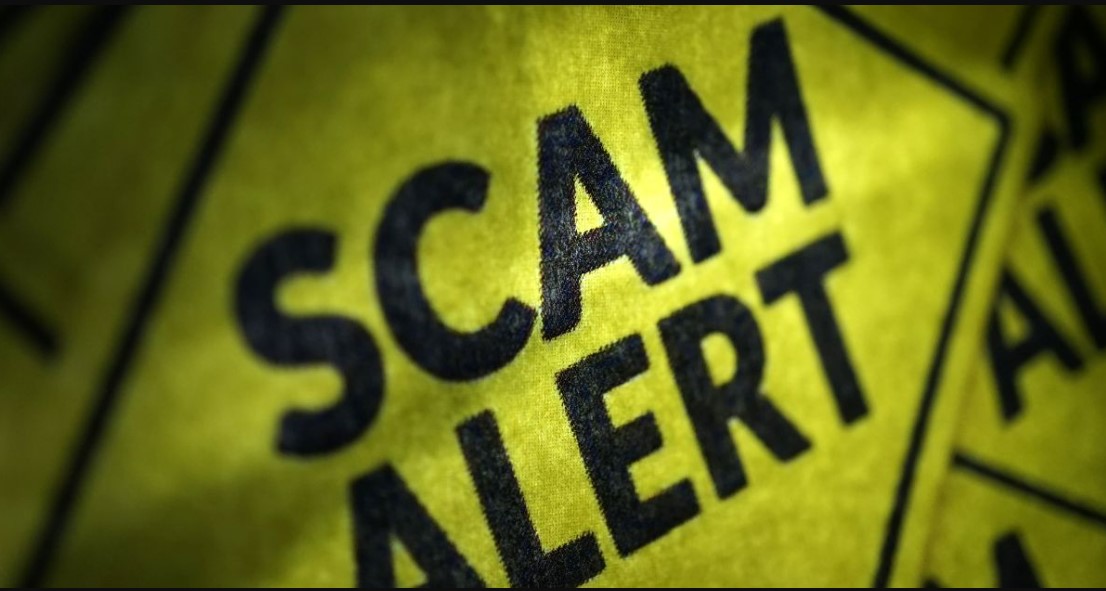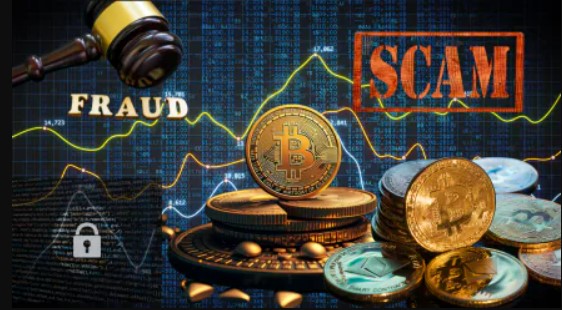LiteGraphs.com Scam Review -High-Risk, Zero-Regulation
In the volatile world of online investing, the line between a genuine opportunity and a sophisticated scam has become increasingly blurred. New platforms emerge daily, promising access to lucrative markets like Forex, stocks, commodities, and the ever-popular cryptocurrency space. These operations often feature dazzling websites, claims of cutting-edge technology, and a management team that appears professional and globally savvy. Yet, the single most critical factor that determines a platform’s integrity—and an investor’s safety—is not its website design or its promised return, but its regulatory status.
The platform LiteGraphs.com serves as a textbook example of an entity that requires extreme scrutiny. While the name itself suggests technical expertise and market analysis (“Graphs”), a deeper examination of its operational foundation reveals a series of severe warnings that every potential investor must heed. The most damning evidence against such platforms is often not found in user complaints, but in the official public warnings issued by global financial authorities—warnings that shine a spotlight on the platform’s decision to operate outside the protective sphere of regulation.
This comprehensive review breaks down the inherent dangers of engaging with platforms that operate in the regulatory shadows, using the documented concerns surrounding LiteGraphs.com to illustrate the universal red flags that should cause any savvy investor to walk away immediately.
The Non-Negotiable Criterion: The Power of Regulation
For any entity that handles client money and offers trading or investment advice, proper registration and licensing with recognized financial authorities is not optional; it is the absolute bedrock of legitimacy. This registration provides three crucial safety nets for the investor: oversight, compliance, and legal recourse.
1. The Red Flag of “Unregistered to Trade”:
LiteGraphs.com reportedly claims to operate out of a European location, such as Belgium, while simultaneously accepting clients from various jurisdictions across the globe. However, financial watchdogs have explicitly stated that this firm is not registered to trade in, or advise on, securities or derivatives within their jurisdictions. This is the single most critical red flag an investor can encounter.
An unregistered firm operates in a regulatory vacuum. It means that no government-backed body is monitoring its financial stability, verifying its trading practices, or ensuring its compliance with anti-money laundering and know-your-customer (KYC) laws. When a platform is flagged as unregistered, it is essentially operating as an unregulated shadow entity. If your funds are placed with such an entity, you have zero guarantee that they are segregated in a secure trust account, or even that they are being traded at all.
2. The Phantom Head Office:
In conjunction with a lack of registration, fraudulent platforms often employ a tactic of claiming a head office in a high-trust European or major financial hub (London, Zurich, or Brussels) to create an illusion of respectability. However, attempts to verify this physical location often reveal a post office box, a shared virtual office, or an address with no demonstrable connection to the alleged firm’s operations.
When an investor attempts to verify the address claimed by LiteGraphs.com, the lack of verifiable, independent corporate records compounds the regulatory issue. A legitimate, globally-reaching broker provides transparent and easily verifiable corporate documentation that aligns with its registered licenses. The combination of a major regulatory caution and an unverifiable physical presence paints a picture of deliberate concealment.
The Broker’s Hook: False Promises and Pressure Tactics
Beyond the technical regulatory concerns, platforms that are flagged for operating without a license consistently utilize a set of psychological tactics to lure and trap new investors. These methods leverage excitement, fear of missing out, and a lack of market knowledge.
3. The Unsolicited Approach and Personalized Service:
Many users find themselves on platforms like LiteGraphs.com after being targeted through unsolicited contact—an email, a social media connection, or a recommendation from a supposedly friendly acquaintance met online (a tactic known as a “Pig Butchering” scam). This contact quickly escalates to an introduction to a friendly, dedicated “account manager” or “analyst.”
This personalized guide is a key component of the deception. They establish a rapport, gain trust, and push the investor to make an initial deposit, often claiming the funds will be managed by an “expert team.” A legitimate, regulated brokerage provides access to trading tools; it rarely assigns a personal, high-pressure salesperson to push for successive deposits, especially one who promises guaranteed returns.
4. The Siren Song of Guaranteed Returns:
The allure of LiteGraphs.com, like most unregulated platforms, rests on the impossible: the promise of fixed, high returns in high-risk markets. No matter how sophisticated a trading algorithm is claimed to be, no entity can guarantee profits in volatile markets like Forex or cryptocurrency.
When your dashboard on such a platform shows perfect, uninterrupted gains—for example, a consistent 5% gain every week, regardless of major global financial events—you are not witnessing financial genius. You are viewing a simulated account balance. The figures are entirely fabricated to encourage a larger deposit. This illusion of success is maintained until the victim attempts to withdraw the capital.
The Withdrawal Trap: The Moment of Financial Extraction
The point at which the investor attempts to retrieve their capital and supposed profits is the moment the platform’s true nature is revealed. The friendly account manager suddenly transforms into a gatekeeper, and the withdrawal process becomes a nightmare of endless complications.
5. The Creation of Arbitrary Fees:
Once a withdrawal is initiated, the platform will suddenly introduce a slew of mandatory, upfront fees that must be paid using fresh, personal capital, not deducted from the account balance. These may include:
- Non-existent “Tax Payments”: Claims that local or international tax must be paid in advance to a third-party account before the funds can be released.
- “Account Unfreezing” Charges: Demands that the account needs an additional deposit to prove financial stability or clear a mandatory, fabricated audit.
- “Large Withdrawal Commissions”: High, opaque fees levied specifically on large transfers, often designed to make the victim deposit even more money to cover the charge.
The investor is trapped in a cycle: pay the fee to get the money out, only to be hit with a new, equally fictitious fee shortly thereafter. These are final attempts to extract maximum capital before the scammer cuts all ties.
6. Isolation and Urgency:
During the withdrawal crisis, the handler will often employ high-pressure tactics, creating urgency and fear. They might threaten that the account will be liquidated, or that the “profits” will be lost entirely if the victim does not pay the required fee within a short, specific window. They also increase the frequency of their original request: to keep the details of the investment secret. Any platform that pressures you to act immediately or to keep financial arrangements private is operating outside the bounds of legitimate finance.
Your Defense: A Commitment to Due Diligence
Platforms like LiteGraphs.com highlight a critical lesson for the modern investor: a well-designed website means nothing without verifiable regulatory compliance. When a public warning is issued by a recognized financial authority, that is the market speaking clearly—a deafening siren demanding immediate caution.
Before entrusting your money to any online trading platform, especially those dealing in high-risk assets like Forex or crypto, always conduct a rigorous due diligence checklist:
- Check Regulatory Lists First: Do not rely on the firm’s claims. Search the official websites of financial regulators in your jurisdiction and the jurisdictions where the firm claims to be registered. Search for the name of the company on official investment caution lists.
- Verify the Address and Staff: Conduct independent searches on the claimed location and management team. A legitimate firm will have a professional, traceable footprint.
- Demand a Live Test: Before depositing a significant sum, deposit the absolute minimum required and immediately attempt to withdraw it. If the platform fails this basic test, your entire capital is at risk.
- Reject Guarantees: Understand that risk is inherent to investing. If a platform promises guaranteed, unrealistic returns, its true product is not financial service; it is financial deception.
Vigilance and adherence to the foundational rules of financial security remain the investor’s best defense against the polished but predatory world of unregulated online brokers.
Report LiteGraphs.com Scam and Recover Your Funds
If you have lost money to LiteGraphs.com Scam, it’s important to take action immediately. Report the scam to Jayen-consulting.com, a trusted platform that assists victims in recovering their stolen funds. The sooner you act, the better your chances of reclaiming your money and holding these fraudsters accountable.
Scam brokers like LiteGraphs.com continue to target unsuspecting investors. Stay informed, avoid unregulated platforms, and report scams to protect yourself and others from financial fraud.
Stay smart. Stay safe.






